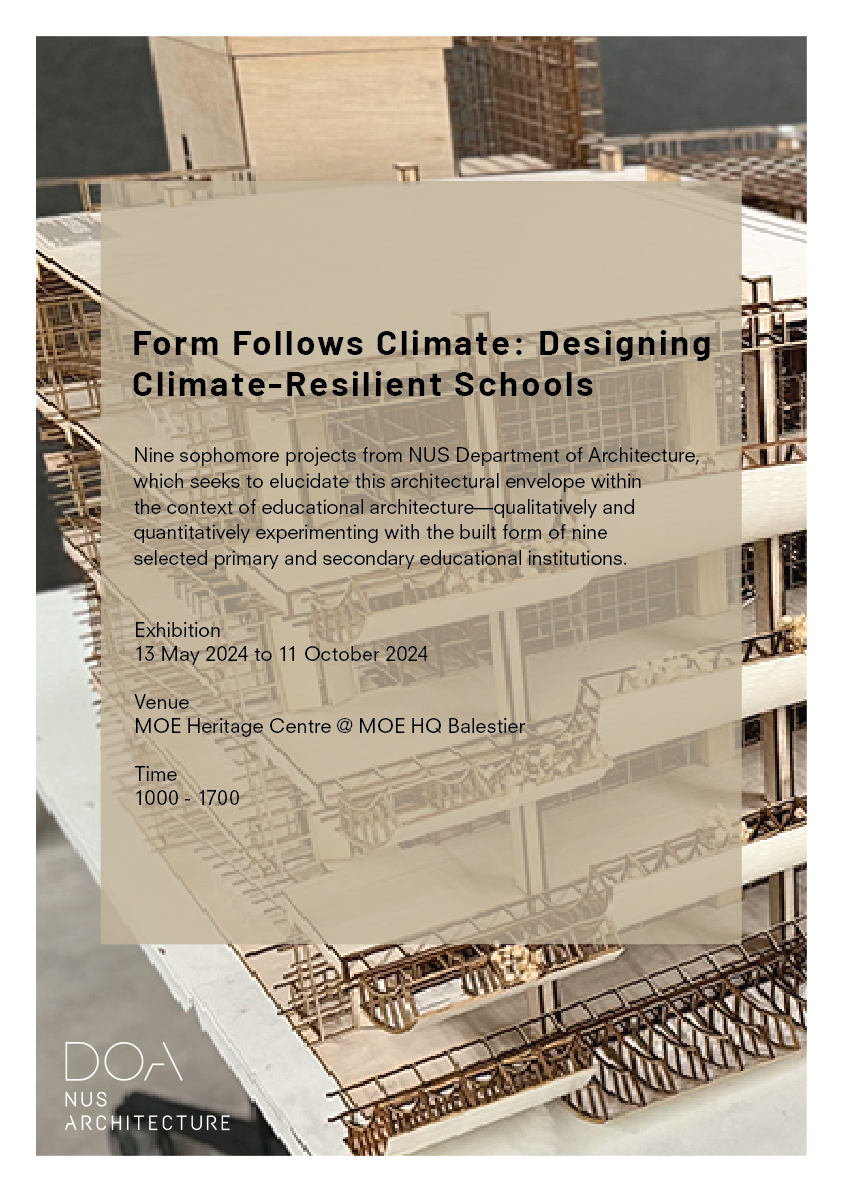Form Follows Climate: Designing Climate-Resilient Schools
Name of Event/Lecture
Form Follows Climate: Designing Climate-Resilient Schools
Location
MOE Heritage Centre @ MOE HQ Balestier, 565 Balestier Rd, Block C, Level 1, Singapore 329927

Research in science and technology over the past century have led to improvements in the overall quality of living, from better public health services, alleviating food precarity to enhancing human comfort within our built environment. The key attribution here is a more profound appreciation of our relationship with the natural and built environment, through exercising greater intentionality when working with environmental systems. Particular to the Singaporean context on the equator, weather does not exist—at least not in the temperate sense— as the consistency of the equatorial climate operates in a narrow bracket of temperature, humidity, and passing storms; These climatic conditions describe a more refined set of design principles for equatorial architectural envelope. An instance of this would be the architecture of nine sophomore projects from the Department of Architecture, National University of Singapore (NUS), which seeks to elucidate this architectural envelope within the context of educational architecture—qualitatively and quantitatively experimenting with the built form of nine selected primary and secondary educational institutions.
These projects negotiate a central design brief with three varied approaches: Performative Perforations led by Associate Professor Florian Heinzelmann; Body Building | Building Bodies led by Associate Professor Erik L’Heureux; Shape Shifting Façades led by Dr Shin Yokoo.